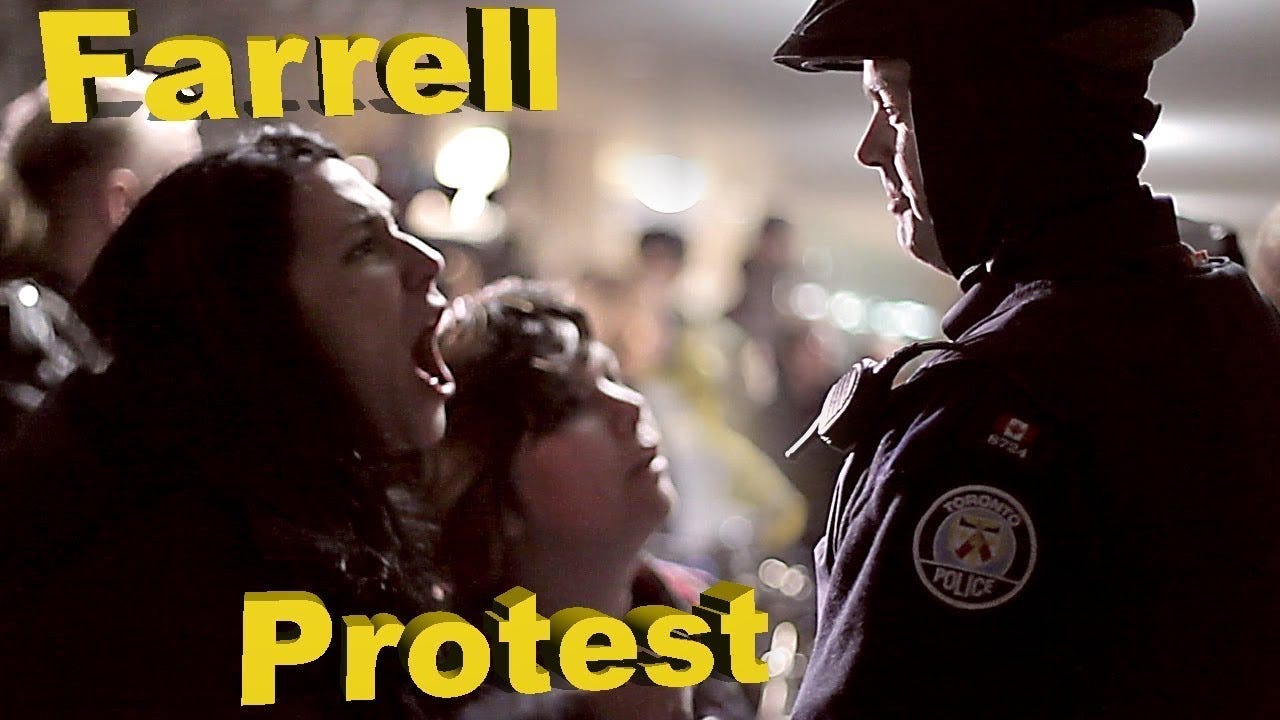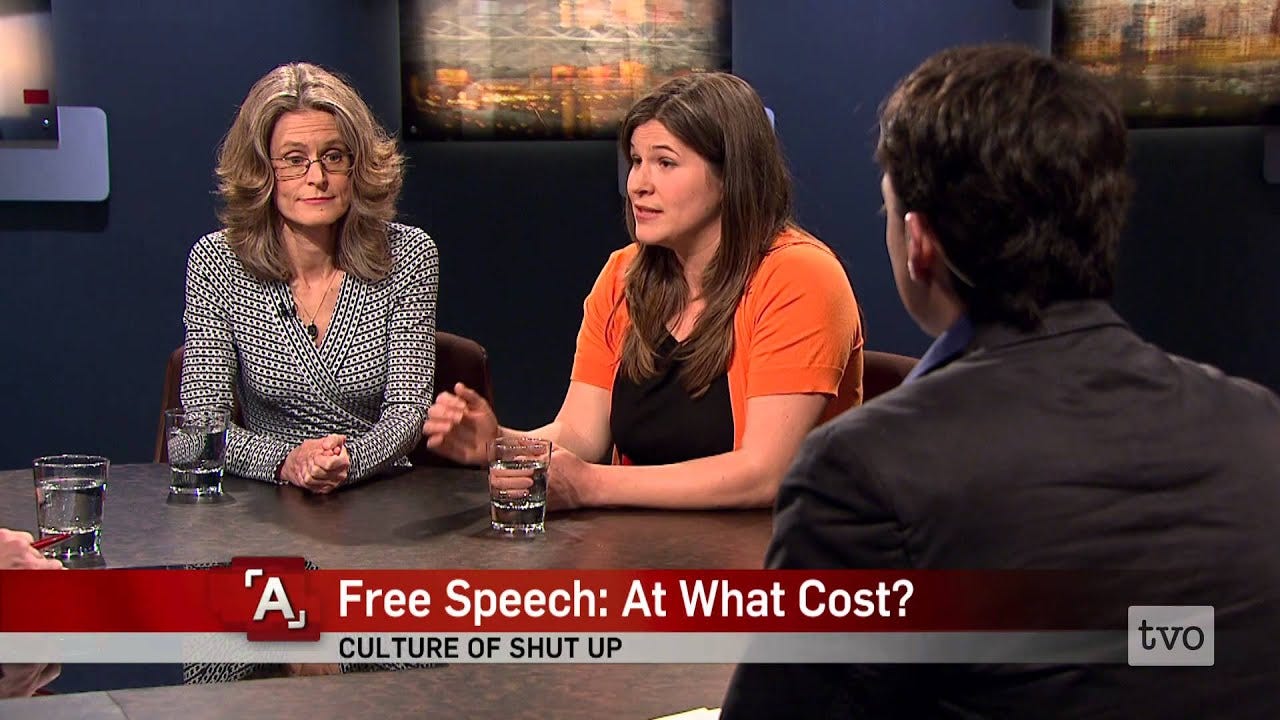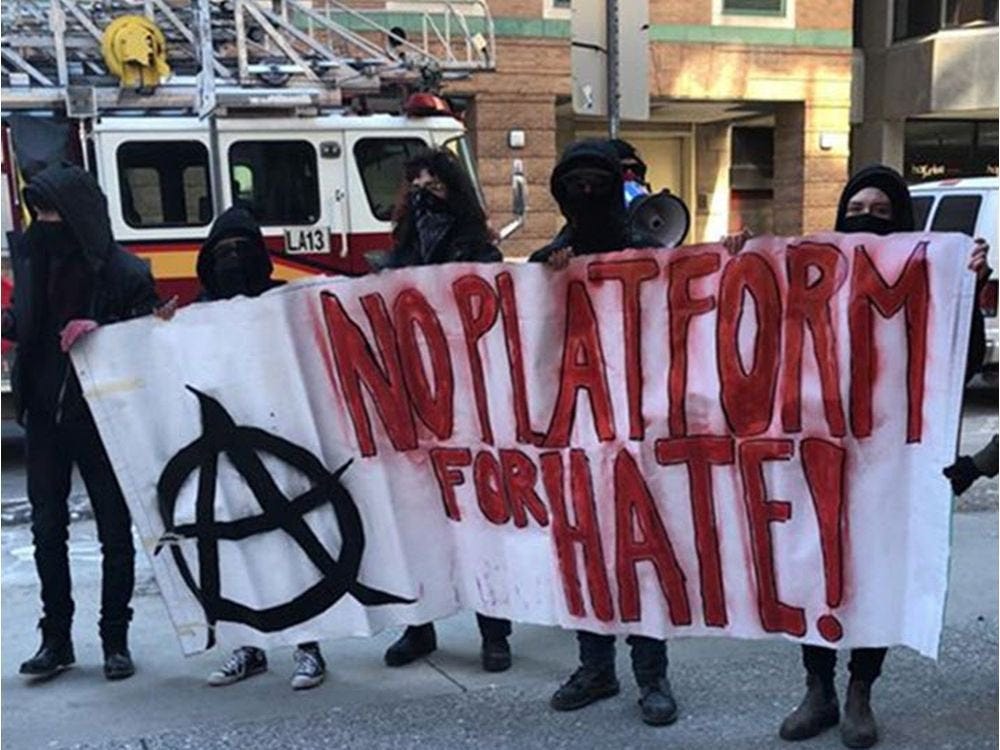I don’t blame anti-trans activist Kellie-Jay Keen, or any woman like her, for being outraged that there are now “No-go zones,” as she recently described to interviewer Benjamin Boyce, where she cannot say her piece. Though I am not a fan of Keen or of anti-trans feminists generally due to their victim rhetoric and anti-male bigotry (see, for example, the recently trending #TransWomenAreConMen), I strongly support Keen’s right to speak without attacks and harassment, and I agree with much of what she has to say about the threat posed by trans ideology to the safety of children and to common-sense social norms.
But there is much more to the story of anti-trans feminism.
As I’ve shown previously, trans as a political phenomenon could not have existed in its present form without feminist ideology, and feminists’ failure to acknowledge their history is dishonest. The idea that gender is a social construct was first popularized by feminists such as Simone de Beauvoir and Kate Millett (see especially Millett’s chapter on “Theory of Sexual Politics”). The idea enabled feminists to reject sex roles, deny the biological basis of behavior, and proclaim that male-female relations could be reinvented from scratch. Very few feminists failed to give this notion their approval (Judith Butler turned all of gender into “performance”), and anyone who argued for the reality of biology—including men’s far greater strength, a point suddenly popular with anti-trans feminists—was denounced as a sexist who wanted to hold women back.
Feminists hectored men for years about their toxic masculinity and their need to access their feminine side. They applauded men who wrote books with nauseating titles like Refusing to Be a Man, which argued that rejecting masculinity was the route to liberation. Now that some men are taking feminist recommendations to the trans extreme, it is risible for anti-trans feminists like Sheila Jeffreys to call their actions oppressive.
At the same time, radical feminists promoted the shutting down of so-called hate speech, and taught their progressive allies on the political left that refusing to tolerate such speech was righteous and necessary. When anyone tried to break the feminist stranglehold on public discussion, feminist brownshirts would protest loudly and attempt to silence the speaker.
One of the first cases to come to wide public attention was the fanatical bullying and harassment of young men seeking to attend Warren Farrell’s talk in 2012 on “The Boy Crisis” at the University of Toronto, a protest caught on video by my friend and producer Steve Brulé. Farrell, a long-time men’s advocate and author who had left the feminist movement over its anti-male animus, was scheduled to speak about rising suicide rates among boys and young men. Gender studies teachers at the University of Toronto, abetted by the local CUPE union, encouraged students to act out rather than engage with Farrell; and the students complied with puerile gusto. At one point, the video shows (mainly) young women shouting “This is what men’s rights looks like!” as men stand by patiently, having been mocked, accused, and taunted.
One young man who was blocking the building entrance to Farrell’s talk stated (at 1:48) “We are here to shut down an event that is promoting the patriarchy.” That was all the rationale he felt necessary to legitimize his and others’ illegal actions. (Farrell did eventually speak, some hours late, after many who had wanted to hear him had gone home.)
Over the next few years, feminists developed a more sophisticated justification for their mob attacks, claiming that criticism of feminism and discussion of male disadvantage were dangerous because they promoted violence against women, normalized female subordination, and undermined equal rights. In England, the Birmingham City Football Club cancelled its contract to host a men’s issues conference after a single article was published alleging a “sinister tone” on the conference organizer’s website. The writer of the article wondered how the Club could claim to promote gender equality while allowing a men’s rights group to use its space, and the Club immediately cancelled the contract.
I’d be a rich woman if I had a dollar for every time I heard that my statements criticizing feminism “made students feel unsafe.” Members of the Revolutionary Student Movement who prevented me from speaking at the University of Ottawa justified their deafening din by claiming that “men’s rights activists are dangerous and hateful” and that my speech (which was never delivered) “created an unsafe atmosphere for many students.”
Over the past ten years, countless events deemed unsafe, far-right, and misogynistic have been noisily protested and often prevented while the vast majority (all, to my knowledge) of feminist activists were either silently acquiescent or aggressively in favor of the cancellations (for an excellent analysis of one such instance, see Ewan Jones’ informative video). Speaking on an episode of TV Ontario’s The Agenda, a feminist professor and a feminist community activist both refused to condemn protesters’ extremism. Heckling, horn-blowing, shouting, and other cancellation tactics were freedom of expression, the professor claimed, and “If you set out to say things that will harm people you can’t complain that your free speech is being violated when people respond with offence, anger, and protest.” The activist, in her turn, was confident that “free speech” definitely did not cover the right to “dispel your drivel, just untruths, to impressionable minds with mic and amplifier” (see a transcript of their comments here.)
At the Ottawa Public Library, after activists with banners saying “No Platform for Hate” barred attendees from entering the building and then pulled the fire alarm, library officials seemed unsure whether to condemn the protesters or apologize to the public for allowing a talk by an anti-feminist to be scheduled in the first place.
Those of us who have been present at such events know well the protesters’ playbook. They are aggressive, loud, and threatening, often attempting to provoke public confrontations by blocking doorways or leaping in front of anyone attempting to walk by. If brushed against or shoved, many will throw themselves to the ground, crying out loudly under the pretense that they have been assaulted. They are not interested in having a civil argument, as my husband—ever hopeful about the power of talk—discovered on many occasions. And as the potty-mouthed zealots at the Warren Farrell fiasco demonstrated, women fired up by feminist ideology are particularly adept at enacting victim-aggression, attempting to incite a response from irritated men that can then be used against them.
A friend of mine who regularly speaks about men’s issues at Speakers’ Corner in London’s Hyde Park has observed feminist activists for years, noting how some will deliberately back up into opponents in a crowd to cause jostling and pushing. Feminist women know that the ability to claim to have been attacked or pushed down becomes a badge of honor.
Not so for anti-feminist speakers who are attacked, of course. When British men’s advocate Mike Buchanan, leader of the political party Justice for Men & Boys, received a milkshake in the face in advance of a talk on “Equal Rights for Men and Women” at the University of Cambridge, the student newspaper covering the incident (which had had a cameraman conveniently on hand to capture the milk-shaking) treated it as a joke, expressing rather more concern about the detaining “against their [sic] will” of the young woman who had thrown the milkshake than about the act itself, or about the intimidating crowd that gathered to insult, heckle, and roar at Buchanan and his colleague Elizabeth Hobson, who also spoke.
Buchanan was not surprised when police elected not to pursue charges against his female assailant, or that they alleged she had already been “humiliated” by being caught on video. She paid a small fine and wrote an apology. Anti-feminist speakers have long known that whatever indignity they endure at the hands of protestors, anger on their behalf by observers, or action by police, will be minimal or non-existent, a testament to the success of feminist ideologues in equating feminism with sacred womanhood.
In light of this history, it is difficult not to feel some muted satisfaction—in recognition of poetic justice—when activists such as Kellie-Jay Keen now find themselves on the receiving end of cries of outrage, cancellation attempts, scurrilous allegations, and threatened (or actual) violence. The violence, it is worth noting, has fortunately been minor so far. Keen has recently posted a video of her assault by a man who squirted water at her. A piece of footage discussed on Fox News shows lesbian feminists and trans activists tussling over a banner, with a black-clad thug on a bicycle riding recklessly through the crowd. Though despicable and worthy of condemnation, I wouldn’t concur with the Fox headline that it constituted “battering.”
My point is not that feminists are having an easy time of it. They are being shamefully treated for stating that men cannot be women. But the attack by trans advocates on anti-trans feminists is not a “women’s issue,” as Keen and others want us to believe. It is a case of one sub-ideology of feminism opposing another sub-ideology of feminism, with both sides using the tried-and-true tactics of feminism to silence the other.
Trans advocates claim, just as feminists claimed before them, that the rhetoric they disagree with is hateful and harmful, a form of violence that must be opposed and prevented. They claim that anti-trans speech “seeks to invalidate transgender women in policy and practice” or, more dramatically, “necessitates the eradication of trans bodies,” just as feminists so often claimed to be violated and marginalized by anti-feminist argument. In addition, trans ideologues refuse to debate, saying that it is unacceptable to hold a “debate” when “one side is effectively being forced to argue for their entire existence against a group of people who would erase us.”
As earlier stated, the outrage of feminists like Kellie-Jay Keen is understandable. We all tend not to care much about suppression of speech when it happens to other people. Nonetheless there is a rich irony in the failure of Keen and her supporters to admit that for years, many feminist women actively encouraged the all-out assault on free speech that now recoils on them. It was their argument that certain kinds of speech must be censored because it allegedly threatened the safety and equality of vulnerable women. Now that is their opponents’ argument, as the shock troops feminists tutored and trained have turned on them.
The immediate answer is simple enough: police must arrest anyone who infringes on people’s rights to express and debate ideas. And feminists should fess up that they created the monster that now menaces them. The larger issue of trans rights will require fair-mindedness on both sides not presently much in evidence.








Risking repeating myself, Janice is by far the clearest thinker on feminism. Every time I hear from her, my own muddled thoughts are clarified, and I feel that I have a firmer grip on reality.
As much as I hate to admit it, I quite enjoy seeing feminism struggle with the trans issue. After supporting bigoted, misandrist political agendas and suppressing all reasonable academic discourse that might shed light on their sexist ideologies or contravene their objectives, feminists are now learning that behaving in bad faith can have consequences. For decades, feminism felt comfortable that it would forever reign supreme over public discourses of victimhood: feminism alone would have dominion over concerns for social injustice, would have the exclusive right to colonize any other ideology or organization seeking recognition of discrimination or harassment, and would allocate its power to those who showed allegiance to feminism like a master throws scraps to a begging dog. The trans issue more than anything else has exposed the weaknesses of the feminist power structure. Feminists like to imagine mythical "safe spaces" as domains that they are protecting from evil male or transgender aggressors; it's a useful trope for promoting in the public imagination the fantasies of the hapless female victim that feminism finds so indispensable. I have to wonder if the actual "safe space" they have in mind is not a women's restroom or other space whose sanctity can only be measured by the absence of men, but rather the ideological space that they have enjoyed for so long in politics and in the academy where their oppressive doctrines could not be questioned.